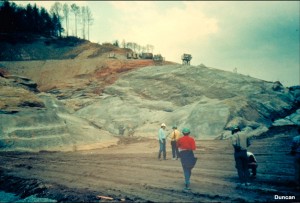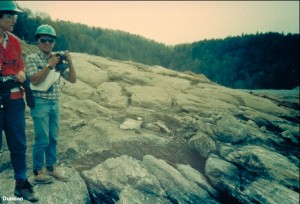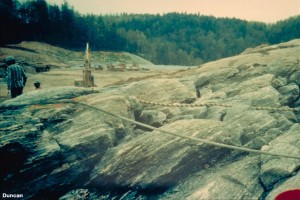These photos are of the rock foundation for Bad Creek Dam in North Carolina. The photos were taken during construction in 1988.

This is view of the exposed bedrock on the right abutment of the dam. The people in the foreground are standing on compacted shell material. The rock of the foundation and abutments must be prepared before compacted soil can be placed against it, and the dam raised to its final elevation. The granitic gneiss rock has a very uneven surface due to weathering along joints and layering.

If fill was placed on this uneven rock surface, it would be impossible to achieve good compaction. There would be many paths through which water could seep, and many voids into which soil could be eroded at the base of the dam.

